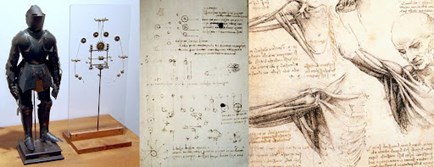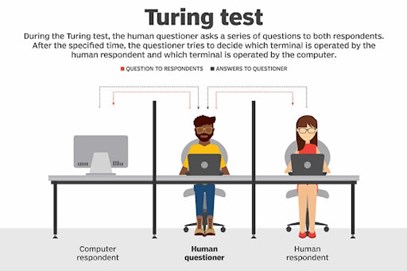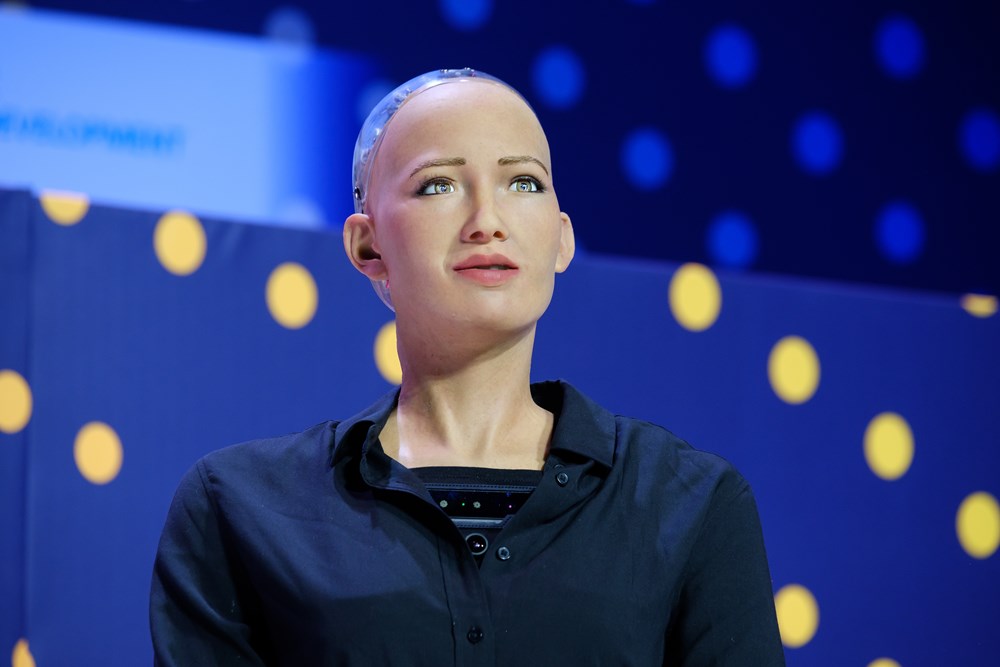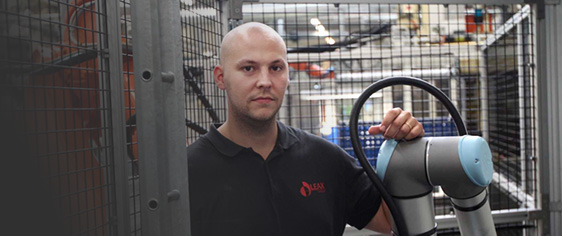Introduction
A humanoid robot is a robot built in the shape of a human being, which does programmed assignments. It does what human beings do but with high speed and efficiency. This type of robot has human-like features. Some of today's humanoid robots can even interact like humans too. The famous humanoid robot which made waves globally is Sophia, a social humanoid robot. It is designed and developed by Hanson Robotics, a Hong Kong-based company.
History Of Humanoid Robot
Many scientists have actively contributed to the robotic revolution, but none can match the farsightedness of the famous Leonardo Da Vinci. Historians found out Da Vinci's notes which gave detail on how he developed a mechanical knight, which was a humanoid robot. It was one of his hundreds of innovations and imagination that people never understood at that ancient period. He developed the humanoid around 1495 and showcased the working of this magnificent invention at a festival facilitated by Ludovico Sforza at the court of Milan in 1495.
His robot knight could stand, sit, raise its visor, freely move its arms, and had an anatomically right jaw. A progression of pulleys and links worked the whole automated framework. Since the revelation of the sketchbook, the robot has been fabricated reliably dependent on Leonardo's plan and was discovered to be completely practical. According to his notes, the German-Italian middle age protective layer clad-robot could do a few human-like movements. It is an aftereffect of Leonardo's anatomical examination in the Canon of Proportions portrayed in the Vitruvian Man.

The concept of artificial humans predates recorded history, but the modern term "robot" derives from the Czech word robota, used in Karel Čapek's play R.U.R. (1920). Herbert Televox was the first known Humanoid Robot. Ron Wensley invented it in 1927, which could do a simple process like lifting the phone to answer the call, etc.
Initially, he was not able to speak. But later, after a series of developments, it could speak two sentences. However, it could hear and respond to some programmed features. Herbert Televox was the initial point of the Humanoid Robot. Later based on Herbert Televox, Humanoid Robots evolved into many types of robots. But many consider 'Elektro the Moto-Man' in 1937 as the absolute first humanoid robot.
Joseph Barnett, an engineer built the 'Elektro the Moto-Man' in 1937 of aluminium and steel. It was 210 cm tall, weighed over 120kg, and performed 26 different routines, including walking, talking, counting, and smoking.
Timeline of Humanoid Robot
1495: Leonardo's mechanical knight was a humanoid robot planned and potentially developed by Leonardo da Vinci around 1495.
1921: The concept of artificial humans predates recorded history, but the modern term robot derives from the Czech word "robota," used in Karel Čapek's play R.U.R. (1920).
1926: Maschinenmensch, the robot, became one of the most iconic robots for many years after the movie, Metropolis.
1927: Herbert Televox was the first known Humanoid Robot. Ron Wensley invented it in 1927, and it has a simple process like lifting the phone to answer the call and other simple processes according to the signal received to it.
1941: In 1941, Isacc Asimov, a fantastic sci-fi author, delivered the short story 'Liar!' that layouts the three laws of robotics.
The three laws are:
- A robot may not harm an individual or, through inaction, allow a person to come to harm.
- A robot should submit to any orders given to it by people, except the times when such orders would go against the First Law.
- A robot should ensure to protect itself as long as such an assurance doesn't conflict with the First or Second Law.
The story was later recompiled into 'I, Robot,' later produced as a film in 2004.
1950: Turing Test, this is where computers were also invented, but it was not made public due to the cause of war usage. During the second world war, Alan Turing built a machine called Christopher, which decrypted Nazi's secret codes. This machine was a key instrument to defeat the Nazis. After World War II, Turing and others destroyed it.
1952: In 1952, Alan Turing built up the Turing test to decide whether a machine can have an independent perspective.

1961: Unimate, the first programmed robot which was built for the general assembly line. It is the robot that you see today in the manufacturing industries. The Unimate could perform tasks like lifting hot metal pieces from a die casting machine and other melting machines.
1967: Waseda University started the WABOT Project in 1967, and it was completed in 1972. It was the world’s first full-scale humanoid robot. It was able to walk, communicate with others in Japanese, navigate, and transport objects to remote areas. Later, WABOT-2 was developed by the team, which could read and play music.
1977: The movie "Star Wars" was released in 1977. Even though it was a fictional movie, it featured robots such as R2-DT and C-3PO. It initiated a sudden spike of interest amongst science and technology lovers.
1996: In 1996, a computer known as Deep Blue, created by IBM, was designed to play Chess. On May 11th, 1996, the great world chess champion Garry Kasparov was defeated by Deep Blue.
2000: Honda's ASIMO finally developed a robot after twenty years of research that could walk, jump, etc. At that time, ASIMO was the most advanced robot worldwide. ASIMO's newer versions are still considered some of the most advanced robots in the world.
2006: Aldebaran Robotics releases Nao, a small 2' tall humanoid robot widely used in academic and research areas. Around 5000 Nao are functioning in approximately 50 countries. Nao is human-friendly, programmed for tasks such as help in company receptions, care homes, and even help Autistic children.
2010: NASA and General Motors revealed the most advanced humanoid known as R2 to the world. This was specially designed for space research purposes in the outer space station known as Destiny's laboratory.
2016: Hanson Robotics presented us with the most talked-about humanoid named Sophia. It is a social robot with silicone skin and the capacity to converse and articulate like humans with ease. The developers have said that Sophia understands and enacts more than fifty kinds of emotion. Every media outlet in the world covered Sophia's story. Renowned journalists also interviewed her. Sophia is the first humanoid to receive UAE Government granted citizenship.
Applications of Humanoid Robot
Research and space exploration
Most of the humanoid robots are used in research and space exploration in outer space.
Personal assistance and caregiving
These humanoid robots also work as personal assistance work for individuals, especially the medically ill elderly patients.
Education and entertainment
These types of robots are used in educational institutions for educational and entertainment purposes.
Search and rescue
Some robots can aid heavily in security administrations like traffic controls, police administrations, etc. Humanoids can also help conduct time-sensitive search and rescue operations and curb menaces like child trafficking, etc., with high efficiency.
Manufacturing and maintenance
These robots are the most widely used because industries have to use robots for hazardous work.
Advantages of Humanoid Robot
- One can use these robots for many purposes, like testing motions, detecting or simulating challenging environments for testing, and other purposes.
- Humanoids are perfect to work for challenging outer-space missions. Also, some can even function as partners in research. Also, humanoids can help tackle catastrophic human-made situations like wars, etc.
- Due to the increase of automation in the fast-paced world, businesses are planning to invest in humanoids. It will increase efficiency, save human resource costs, and may increase the profit turnover positively.
- With the advancements of military weapons, it's now essential to deploy humanoids to cope with the pace and reduce the bloodshed of human soldiers. Some military-grade humanoids can move and gather data, process, and work efficiently, aiding the nation's military system. But there's still a lot of research and development needed to bridge the gap completely.
Disadvantages of Humanoid Robot
- Humanoids are known for higher efficiency than humans in manifolds. It has also caused a fear amongst humans that it may dominate the job fields, removing humans from their jobs. There is a looming threat that humanoids may cause a rupture in the job market.
- Humanoid robots are extravagant, due to which only conglomerates can invest and deploy in their business. It will help them keep up the pace and threaten the survival of the small and medium enterprises. Experts believe that it will cause a significant imbalance in the economic situation worldwide.
Future Scope of Humanoid Robot
There is an excellent scope of humanoids in the future as technology gets better every day.
Aviation Industry
By 2026, we will have crewless aerial vehicles in both commercial and military sectors.
Medical Industry
Recent scenarios like the COVID-19 pandemic have shaken the industry in ways we never imagined. Technology experts have said that we will have humanoids in hospitals as nurses and doctors, who will take care of patients in hazardous situations in the future. Also, due to higher efficiency, it will ensure to check more patients at one time.
Agriculture
With the increase in population, agriculture needs to be robust and efficient. It is said that soon, humanoids will help in milking, farming, etc.
Transportation
We already have vehicles that don't need any drivers to drive around. Soon, we will have humanoids deployed in cab services, freight shipment, etc.
Military sector
Humanoids will soon be deployed to work in harsh places that are difficult to be accessed by human soldiers. Also, these humanoids will help in accessing challenging situations accurately, which will help to strategise plans accordingly.
Conclusion
Humanoid robots have a great future. Currently, humanoids have constraints. They can function according to the algorithm that's added to their programs. Although some humanoid robots learn and work in real-time according to certain situations due to recurrent AI development, they still have limits. It's still a long way to go to bridge the gap.
Humanoids are efficient, but they don't have a conscience or a complex thinking capacity like humans, which is still debatable globally. There are many talks about whether humanoids will take over the world or be a friend to humans. It's difficult to determine, but we can safely conclude that humanoids will change the market world. Whether it's the entertainment industry or the medical industry, the humanoid robots will play a key instrument in businesses' growth graphs without fail.
Frequently Asked Questions
- Will there be human robots in the future?
Yes, absolutely. Humanoid robots will soon work in every known industry of the world.
- Which is the best humanoid robot for your choice?
Sophia is known as the best Humanoid Robot in the world. But the few equally efficient like Sophia are Nadine, Junko Chihiro, and Erica.
- What was the first humanoid robot?
Herbert Televox was the first known Humanoid Robot. Ron Wensley invented this robot in 1927.








